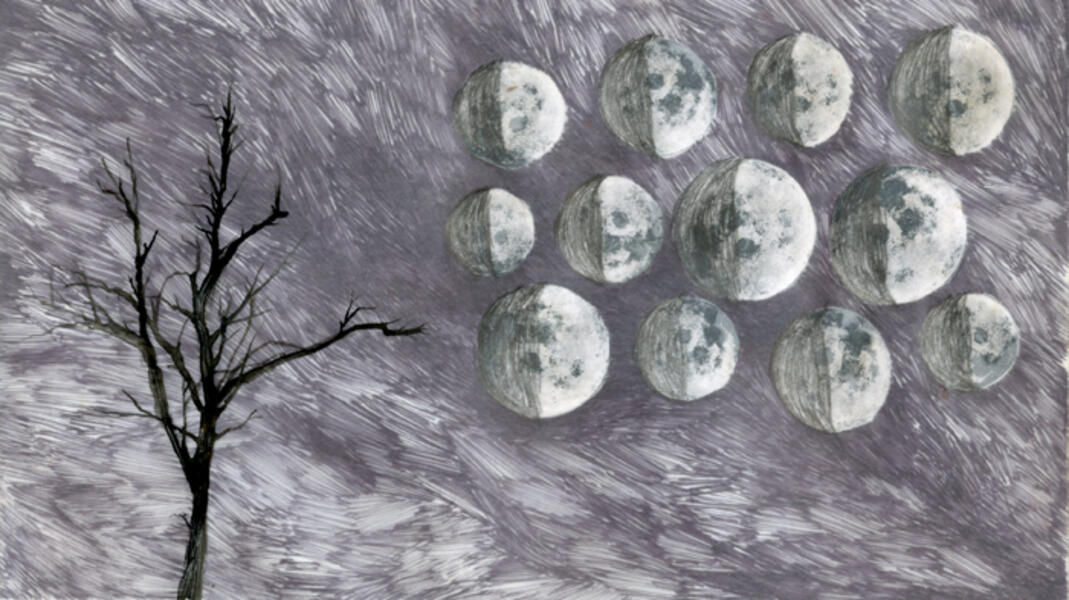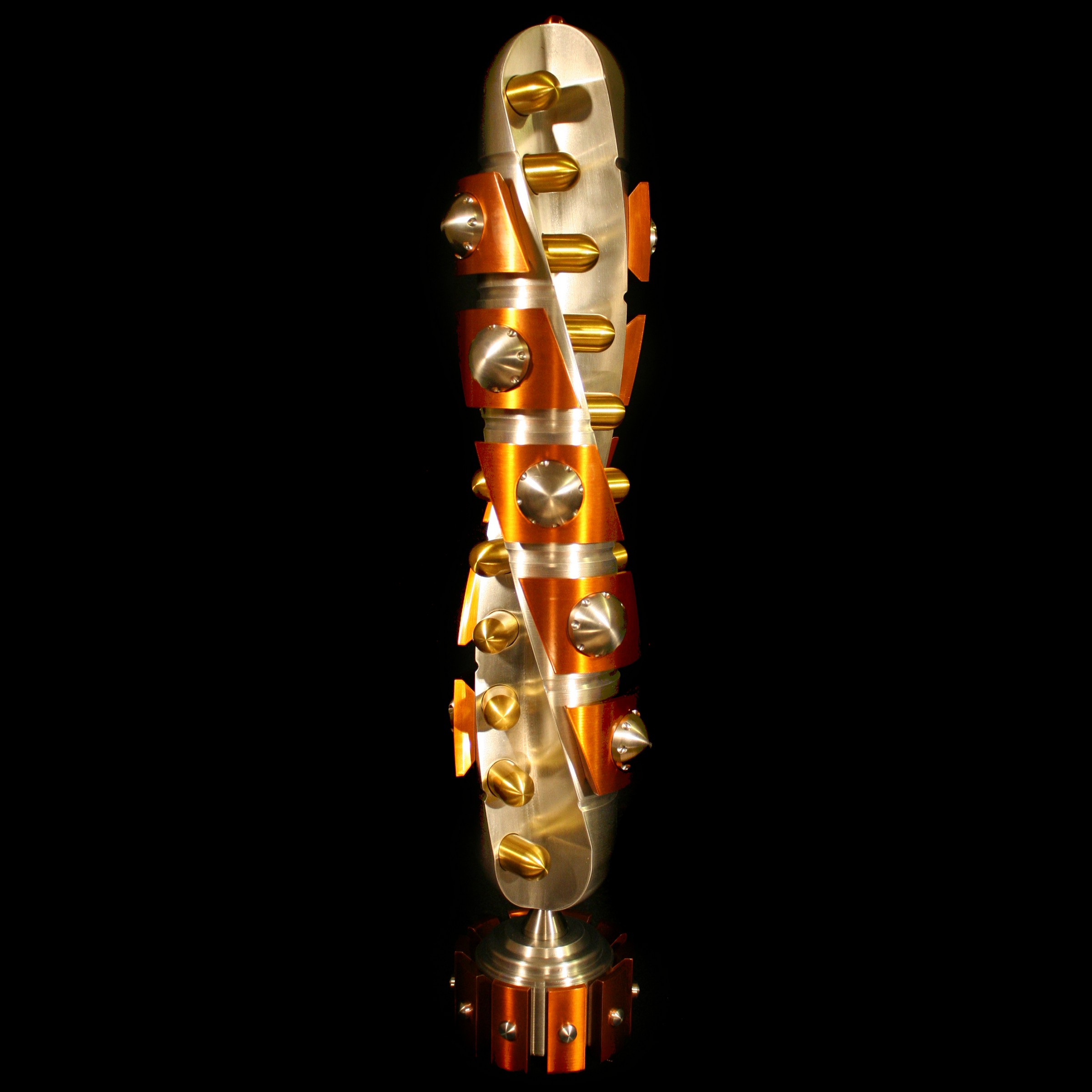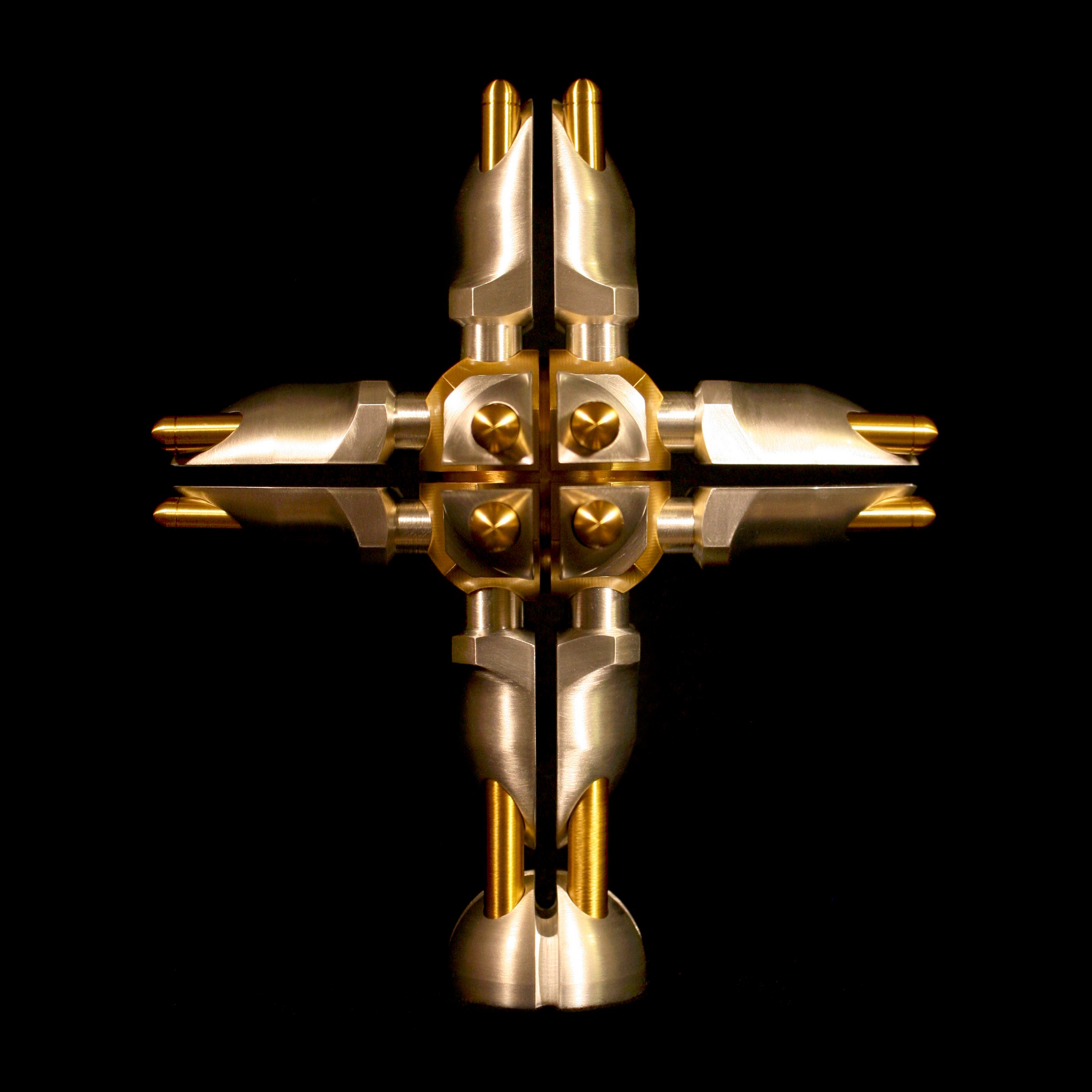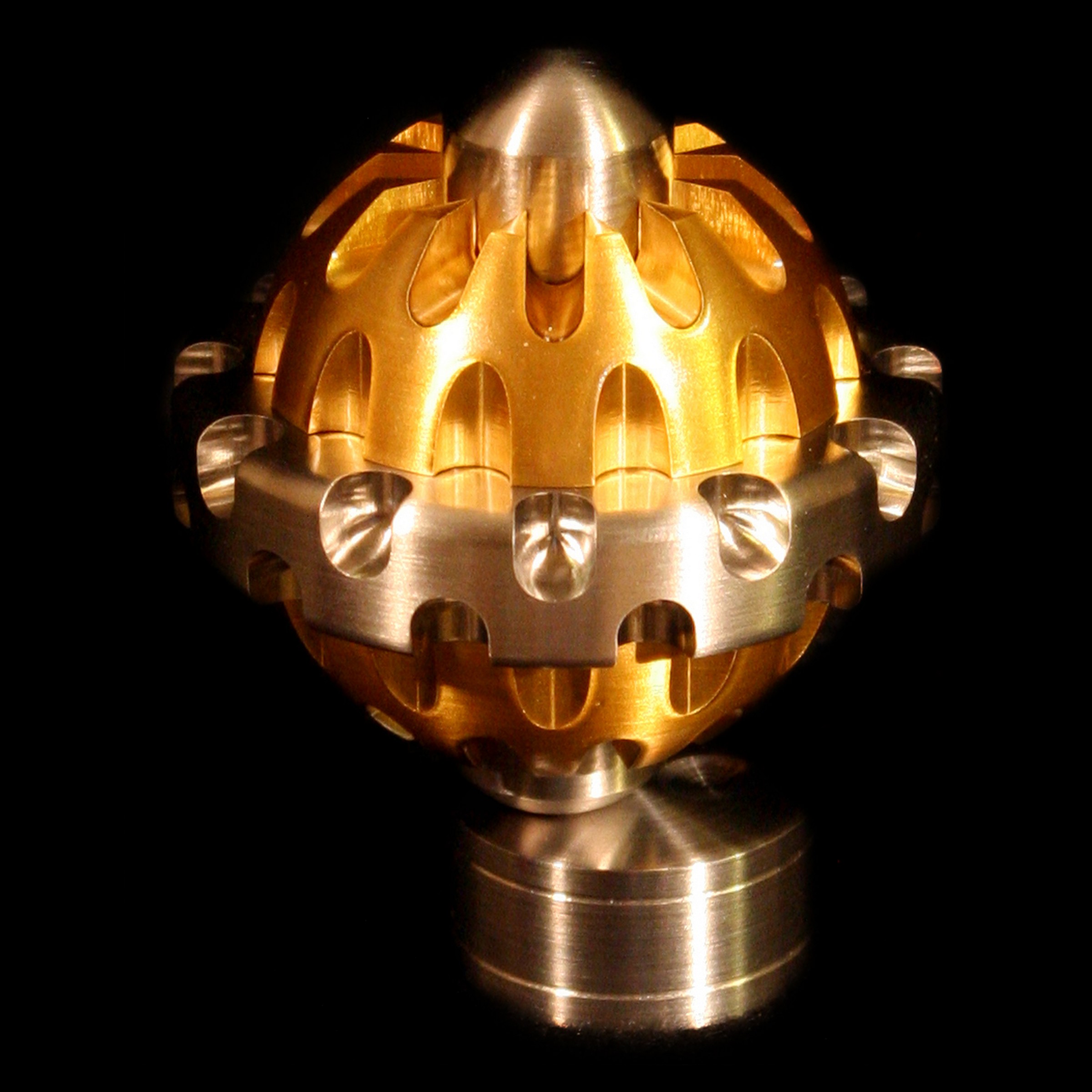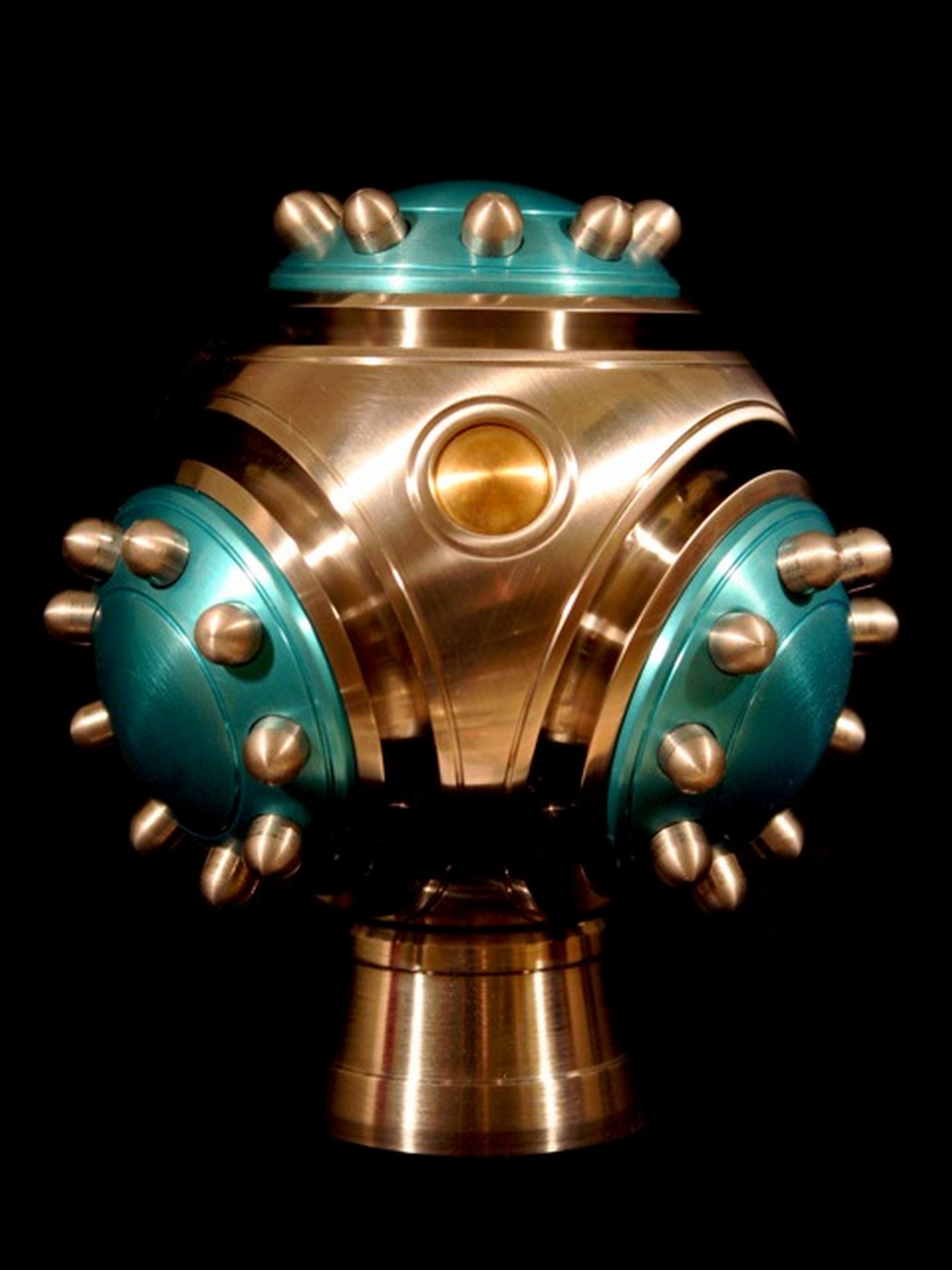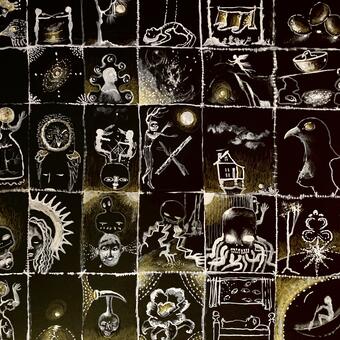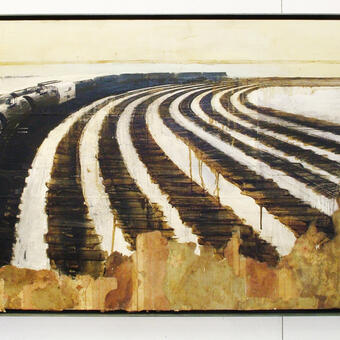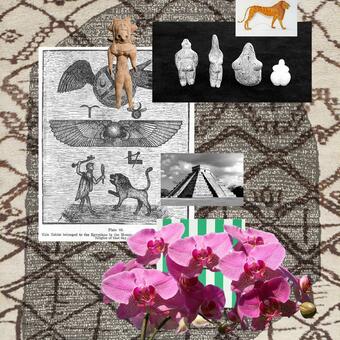About Rahne
Baltimore City

Rahne Alexander is an intermedia artist and writer from Baltimore, Maryland. She is a 2021 graduate of the Intermedia+Digital Arts MFA at UMBC, and a 2021 Baker Artist Prize Awardee. Her works in video, performance, music, and painting have been exhibited across the U.S. and around the world, including the Baltimore Museum of Art, Tephra Institute of Contemporary… more
Jump to a project:
Machined Objects 2013
Chris Bathgate builds finely tuned metal sculptures with an array of computer controlled (CNC) equipment of his own design. Unlike artists who use CNC devices as a finishing step, essentially printing out artworks conceived in a virtual sphere, Bathgate incorporates every aspect of how these tools function into his thinking about form. This level of involvement is necessary for the complexity of his work, but it is also fundamental to his vision, which he develops through the application and evolution of the technology at his disposal, rather than according to representational goals. Though Bathgate is, in many ways, like an engineer building machines, the internal logic of his sculptures imbues them with a sense of life, if not a formal resemblance to living things. This somewhat paradoxical result arrived at by the way that Bathgate develops forms and uses technology, realigns expectations about the artist’s relationship with their medium, and the role that plays in producing artworks by digital means.
In CNC fabrication systems the wheels and levers of conventional tools such as mills and lathes are driven by digital instructions. With the aid of software, these instructions may be generated from 3-D computer models, allowing artists to sculpt in a virtual environment. For artworks shaped from a single block of material, a CNC machine can function as a simple output device, rendering digital forms into physical matter, efficiently replacing methods like carving and casting. Having, structurally, more in common with jet engines than with the products of these traditional techniques, Bathgate's works cannot be realized in such a hands-off way. Their numerous interlocking components are milled to precisions on the order of thousandths of an inch, a technical feat depending heavily on logical as opposed to visual or manual skills. For greater control, Bathgate often writes the code that drives his machines by hand. Working in this manner, his programming language, like any other tool, suggests ways of thinking about form. From the perspective of computation, mechanical parameters, such as those describing the position of a work piece on a mill, are simply quantities represented by variables. The particular way in which Bathgate conceptualizes their relationships in the code that runs his machines, replaces what in manual crafts is known as “the hand of the artist.” In contrast to a more automatic approach, Bathgate’s deep involvement in the language of his medium allows him to exploit its unique vicissitudes to artistic effect. By the modification of values in a program, he can shape metal in the manner of a painter handling a brush.
The seeds of Bathgate's sculptures may be loose pencil sketches, but are as often ideas resulting from a new tool he has built or a new fastening system he has employed. While Bathgate fully schematizes his final designs in CAD drawings, their genesis does not proceed in a top-down fashion as it would if he were pursuing a representational objective. It is more accurate to say that his works take shape amidst the push and pull between formal ideas and material constraints. In light of the expectations engendered by virtual design and robotic execution, it is easy to overlook the fact that a piece of metal of a particular size and weight needs to be maneuvered to meet a cutting surface at a certain angle. A great deal of Bathgate's time and material actually goes into building jigs just to position pieces of a final sculpture as they are being cut. Because of the strategy required to mill metals into the complex shapes that Bathgate designs, considerations of how he can achieve certain ends help to select what his ultimate ends are. This process-oriented manner of development may seem at odds with Bathgate's polish and precision, yet it is part of what makes them possible. Being opportunistic with elements of design, Bathgate can exploit what his tools do gracefully. These occasions for virtuosity are generated in a web of logistical problems and considerations of things like material stress and the necessity of assembling parts with screws and pins. In negotiating these demands, Bathgate's works are, in a fundamental way, engineered. Their logic, however, is not directed by a mechanical function, but is inwardly focused, resolving a balance between formal interests and concrete reality, imparting them with an independent sense of purpose.
With their axes of symmetry and minimal negative space, many of Bathgate's sculptures bear a formal resemblance to animal beings. Their intricate interlocking pieces do not suggest handles and buttons, but appear to have internal necessity like the visible organs of living creatures. Nonetheless, it cannot be ignored that Bathgate's works have only the most abstract likeness to things organic. Their aesthetic of geometry and machined metal invites comparison to artifacts of technology, such as tools and fixtures, while their precision argues both for and against their being man-made. Eschewing such a tidy dichotomy, recent sculptures have incorporated weight distribution strategies not found in nature and colony-like organization unseen in familiar creatures. Some works have even become moveable, with detachable pieces and re-configurable compositions, subverting the representational mode of figure in space and recalling the interaction one has with manufactured objects. Considering that Bathgate can be said to be working in the medium of machines, it may be tempting to construe this development along the lines of a modernist narrative seeing him moving from an imitative mode to one in which the medium constitutes the subject of the art. While such stories are interesting to apply, it is also true that the contemporary understanding of biology is augmented by and conceptualized in terms of technology. Powerful microscopes reveal the alien structure of microorganisms, while computer modeling fuels speculations about extraterrestrial life, and futurists predict the advent of cybernetic beings. Given that Bathgate often speaks of his work in terms of research and experimentation, it is perhaps more appropriate to view the products of his imagination through the lens of science rather than through that of ideals such as progress.
As Bathgate's art evolves, it continues to challenge the viewer's understanding of the relationship between life and technology, both from the angle of how it appears, and from the perspective of how it is made. Standing at an intriguing distance from the virtual realm, Bathgate’s sculptures bear the imprint of a human touch even when shaped by non-manual processes. Forming his creative vision within complex engineering problems, Bathgate has created in mechanical construction an analogy to the genesis of living things. It can be seen from the way in which his work deviates from visual likeness to familiar creatures, that it owes its biological association to this genetic or conceptual correspondence, more so than to any formal similarity. In these respects, Bathgate supplies a unique and provocative contribution to the art of the digital age.
In CNC fabrication systems the wheels and levers of conventional tools such as mills and lathes are driven by digital instructions. With the aid of software, these instructions may be generated from 3-D computer models, allowing artists to sculpt in a virtual environment. For artworks shaped from a single block of material, a CNC machine can function as a simple output device, rendering digital forms into physical matter, efficiently replacing methods like carving and casting. Having, structurally, more in common with jet engines than with the products of these traditional techniques, Bathgate's works cannot be realized in such a hands-off way. Their numerous interlocking components are milled to precisions on the order of thousandths of an inch, a technical feat depending heavily on logical as opposed to visual or manual skills. For greater control, Bathgate often writes the code that drives his machines by hand. Working in this manner, his programming language, like any other tool, suggests ways of thinking about form. From the perspective of computation, mechanical parameters, such as those describing the position of a work piece on a mill, are simply quantities represented by variables. The particular way in which Bathgate conceptualizes their relationships in the code that runs his machines, replaces what in manual crafts is known as “the hand of the artist.” In contrast to a more automatic approach, Bathgate’s deep involvement in the language of his medium allows him to exploit its unique vicissitudes to artistic effect. By the modification of values in a program, he can shape metal in the manner of a painter handling a brush.
The seeds of Bathgate's sculptures may be loose pencil sketches, but are as often ideas resulting from a new tool he has built or a new fastening system he has employed. While Bathgate fully schematizes his final designs in CAD drawings, their genesis does not proceed in a top-down fashion as it would if he were pursuing a representational objective. It is more accurate to say that his works take shape amidst the push and pull between formal ideas and material constraints. In light of the expectations engendered by virtual design and robotic execution, it is easy to overlook the fact that a piece of metal of a particular size and weight needs to be maneuvered to meet a cutting surface at a certain angle. A great deal of Bathgate's time and material actually goes into building jigs just to position pieces of a final sculpture as they are being cut. Because of the strategy required to mill metals into the complex shapes that Bathgate designs, considerations of how he can achieve certain ends help to select what his ultimate ends are. This process-oriented manner of development may seem at odds with Bathgate's polish and precision, yet it is part of what makes them possible. Being opportunistic with elements of design, Bathgate can exploit what his tools do gracefully. These occasions for virtuosity are generated in a web of logistical problems and considerations of things like material stress and the necessity of assembling parts with screws and pins. In negotiating these demands, Bathgate's works are, in a fundamental way, engineered. Their logic, however, is not directed by a mechanical function, but is inwardly focused, resolving a balance between formal interests and concrete reality, imparting them with an independent sense of purpose.
With their axes of symmetry and minimal negative space, many of Bathgate's sculptures bear a formal resemblance to animal beings. Their intricate interlocking pieces do not suggest handles and buttons, but appear to have internal necessity like the visible organs of living creatures. Nonetheless, it cannot be ignored that Bathgate's works have only the most abstract likeness to things organic. Their aesthetic of geometry and machined metal invites comparison to artifacts of technology, such as tools and fixtures, while their precision argues both for and against their being man-made. Eschewing such a tidy dichotomy, recent sculptures have incorporated weight distribution strategies not found in nature and colony-like organization unseen in familiar creatures. Some works have even become moveable, with detachable pieces and re-configurable compositions, subverting the representational mode of figure in space and recalling the interaction one has with manufactured objects. Considering that Bathgate can be said to be working in the medium of machines, it may be tempting to construe this development along the lines of a modernist narrative seeing him moving from an imitative mode to one in which the medium constitutes the subject of the art. While such stories are interesting to apply, it is also true that the contemporary understanding of biology is augmented by and conceptualized in terms of technology. Powerful microscopes reveal the alien structure of microorganisms, while computer modeling fuels speculations about extraterrestrial life, and futurists predict the advent of cybernetic beings. Given that Bathgate often speaks of his work in terms of research and experimentation, it is perhaps more appropriate to view the products of his imagination through the lens of science rather than through that of ideals such as progress.
As Bathgate's art evolves, it continues to challenge the viewer's understanding of the relationship between life and technology, both from the angle of how it appears, and from the perspective of how it is made. Standing at an intriguing distance from the virtual realm, Bathgate’s sculptures bear the imprint of a human touch even when shaped by non-manual processes. Forming his creative vision within complex engineering problems, Bathgate has created in mechanical construction an analogy to the genesis of living things. It can be seen from the way in which his work deviates from visual likeness to familiar creatures, that it owes its biological association to this genetic or conceptual correspondence, more so than to any formal similarity. In these respects, Bathgate supplies a unique and provocative contribution to the art of the digital age.
-
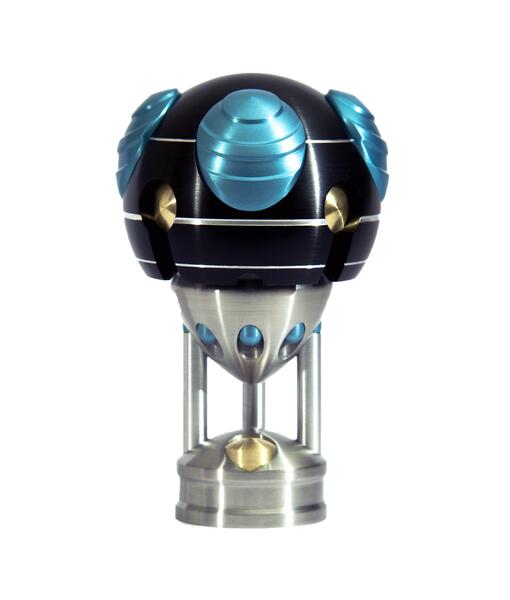 MU415511322Machined Aluminum, Stainless steel, Bronze
MU415511322Machined Aluminum, Stainless steel, Bronze -
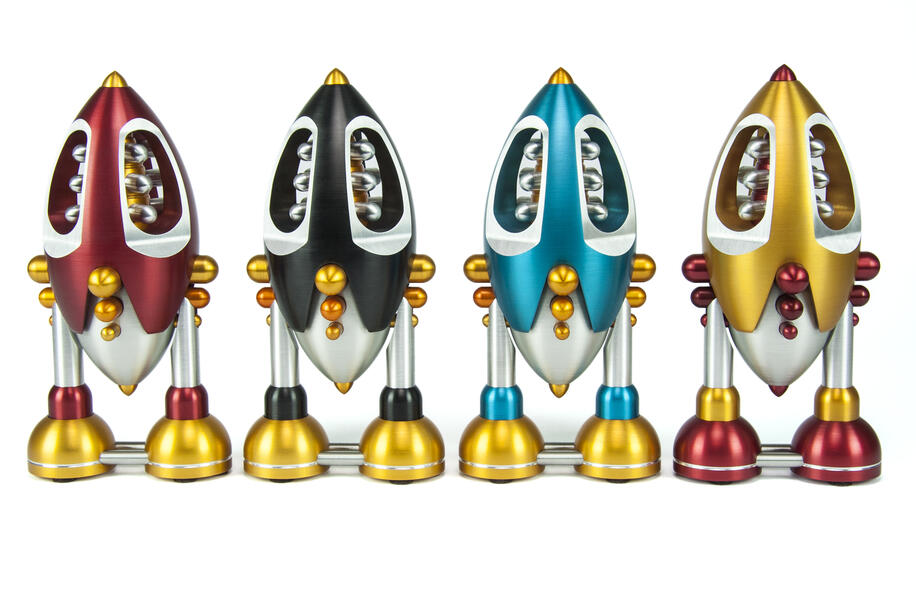 CT345542422Machined Aluminum, and Stainless steel
CT345542422Machined Aluminum, and Stainless steel -
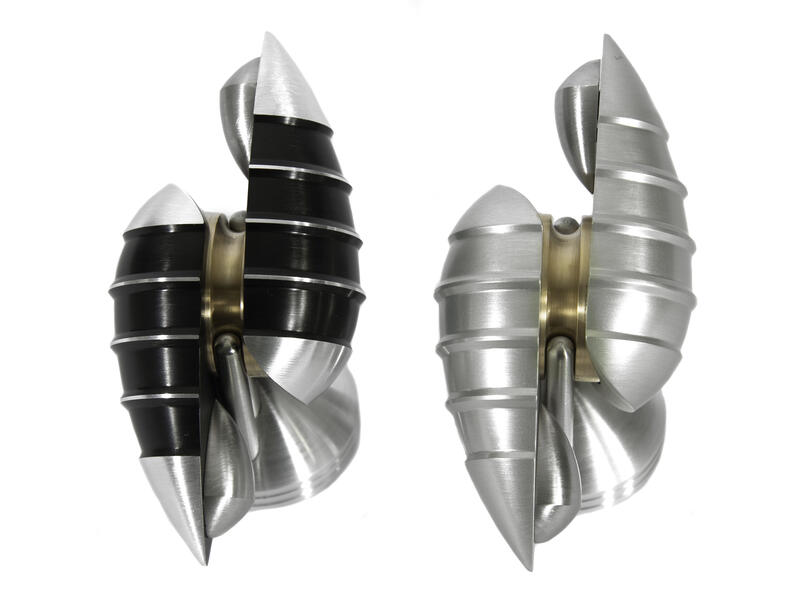 FX 633334453532254Machined Aluminum, Bronze and Stainless Steel
FX 633334453532254Machined Aluminum, Bronze and Stainless Steel -
 FX 633334453532254Machined Aluminum, Bronze and Stainless Steel
FX 633334453532254Machined Aluminum, Bronze and Stainless Steel -
 IT 934445512224843614735Machined Aluminum, Bronze, Stainless steel
IT 934445512224843614735Machined Aluminum, Bronze, Stainless steel -
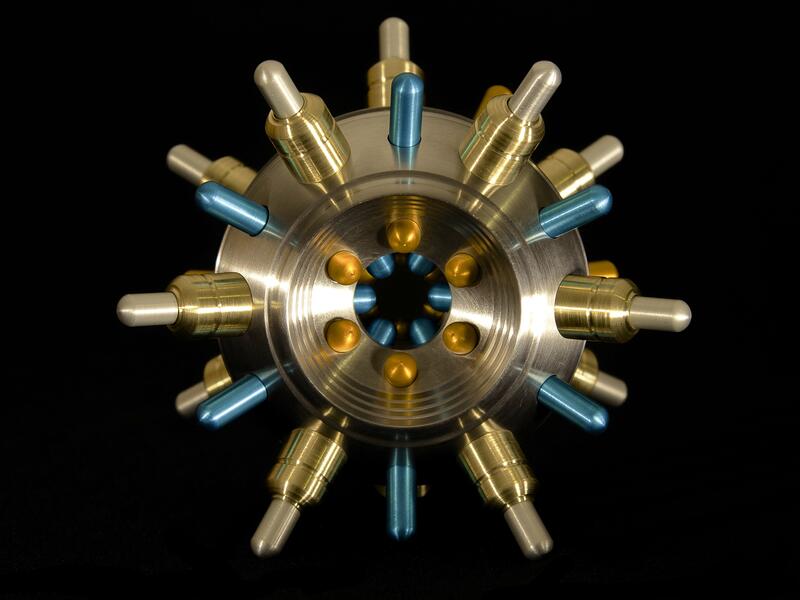 CP 412252645235Machined Stainless, Aluminum, Bronze
CP 412252645235Machined Stainless, Aluminum, Bronze -
 LS 322244414Machined Aluminum and Stainless Steel
LS 322244414Machined Aluminum and Stainless Steel -
 UN 712254435523314645Machined Aluminum and Stainless steel
UN 712254435523314645Machined Aluminum and Stainless steel -
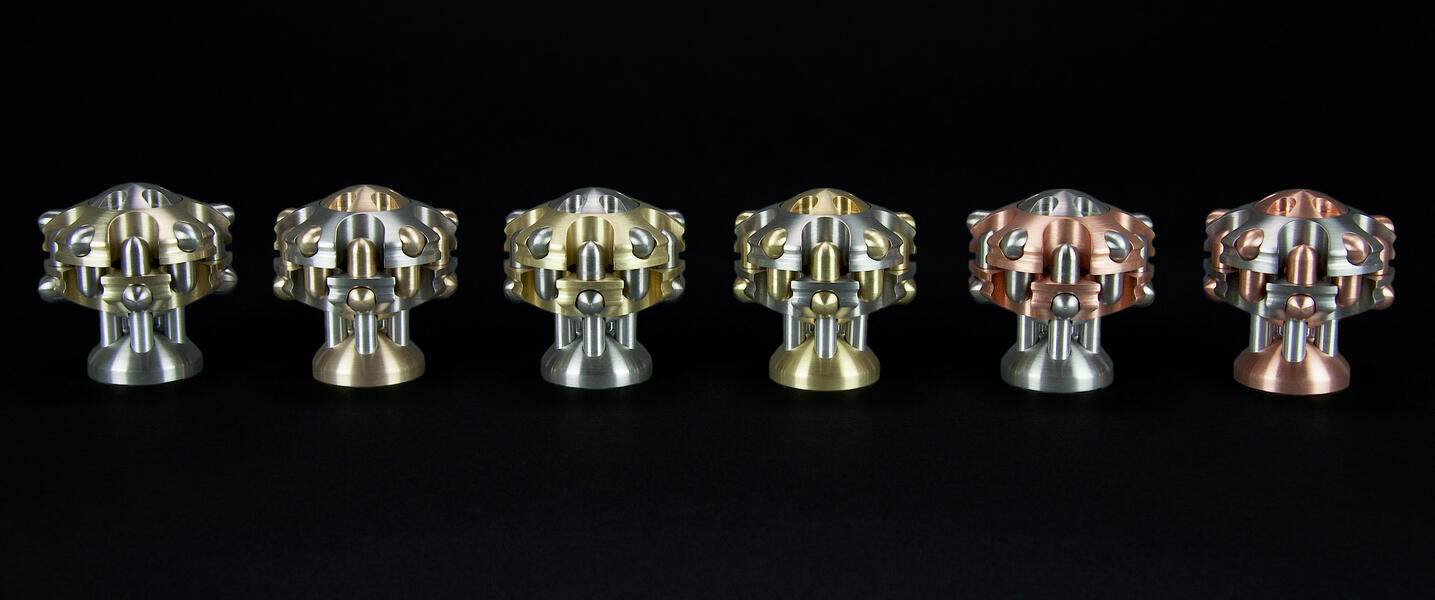 AR645452222344Machined. Stainless Steel, Brass, Bronze, Copper, and Aluminum
AR645452222344Machined. Stainless Steel, Brass, Bronze, Copper, and Aluminum -
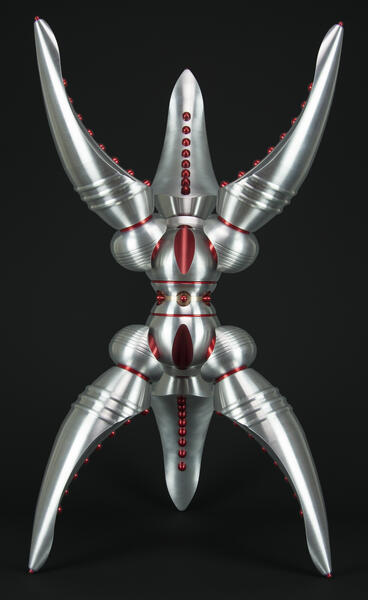 MX 535612252312412Machined Aluminum, and Bronze
MX 535612252312412Machined Aluminum, and Bronze
Black Windows
Drawn on tracing paper in ink and graphite, Black Windows is a hand crafted portrait of a city with few occupants. Based on the city of Baltimore, the film begins with a small roach roaming between cracked, abandoned architecture. While insects and rodents pass freely from interior to exterior, a young couple stares from their window into the shadows of their neighborhood. The perspective spirals outward, where above, the a police-helecopter watches over the city.
Machined objects
In contrast to many of his contemporaries, Chris Bathgate?s use of metal is neither structural nor illusionistic. It does not refuse to transform the medium, and it does not play on the medium?s opposites, e.g. lightness from metal?s weight, or organic forms from its rigidity.
Bathgate?s process most closely resembles that of a machine builder or engineer. In the last two years, he has become increasingly involved in using mathematical techniques. This has allowed him to achieve the high degree of precision necessary for assembling such intricate works (these sculptures are not cast). The result is indeed a transformation-the pieces fit together in such a way that they cease to appear man-made, and yet in spite of this lack of bumpiness or personal touch emanate a presence that is unmistakable and engaging.
Bathgate?s entities are like instances of a foreign intelligence. Being uninhibited by pretensions to flesh, these sculptures call a type of ?creature feeling? reflecting their intellectual (as opposed to emotional) humanism.
According to Bathgate, every sculpture is an experiment in response to an abstract opposed to pragmatic problem-it does not work towards a presumed result. From the point of view of the process, a finished work is not an end in itself but a place that one goes to.
Bathgate?s process most closely resembles that of a machine builder or engineer. In the last two years, he has become increasingly involved in using mathematical techniques. This has allowed him to achieve the high degree of precision necessary for assembling such intricate works (these sculptures are not cast). The result is indeed a transformation-the pieces fit together in such a way that they cease to appear man-made, and yet in spite of this lack of bumpiness or personal touch emanate a presence that is unmistakable and engaging.
Bathgate?s entities are like instances of a foreign intelligence. Being uninhibited by pretensions to flesh, these sculptures call a type of ?creature feeling? reflecting their intellectual (as opposed to emotional) humanism.
According to Bathgate, every sculpture is an experiment in response to an abstract opposed to pragmatic problem-it does not work towards a presumed result. From the point of view of the process, a finished work is not an end in itself but a place that one goes to.
-
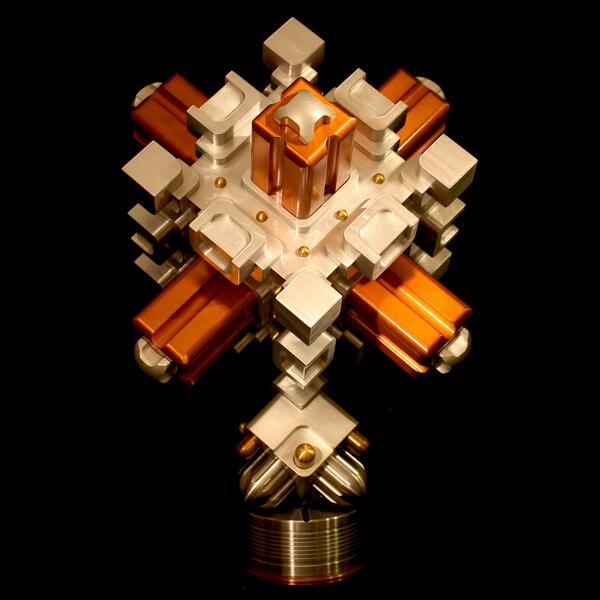 BC 443621141281783Machine Aluminum, Copper, Brass, Stainless Steel 13"x9"x9" These works are not assemblages or made from found objects. Instead, every element of these sculptures has been designed, engineered and machined from solid blocks of the various types of metal that I use as my color palette.
BC 443621141281783Machine Aluminum, Copper, Brass, Stainless Steel 13"x9"x9" These works are not assemblages or made from found objects. Instead, every element of these sculptures has been designed, engineered and machined from solid blocks of the various types of metal that I use as my color palette. -
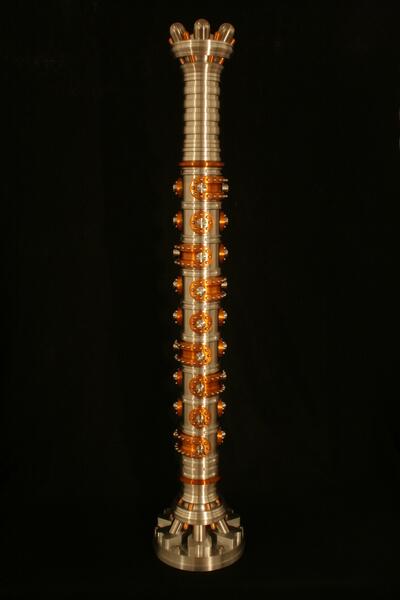 dn881501269967743341469Machined Aluminum, Copper, and Stainless Steel 42"x 8"x8'' These works are not assemblages or made from found objects. Instead, every element of these sculptures has been designed, engineered and machined from solid blocks of the various types of metal that I use as my color palette.
dn881501269967743341469Machined Aluminum, Copper, and Stainless Steel 42"x 8"x8'' These works are not assemblages or made from found objects. Instead, every element of these sculptures has been designed, engineered and machined from solid blocks of the various types of metal that I use as my color palette. -
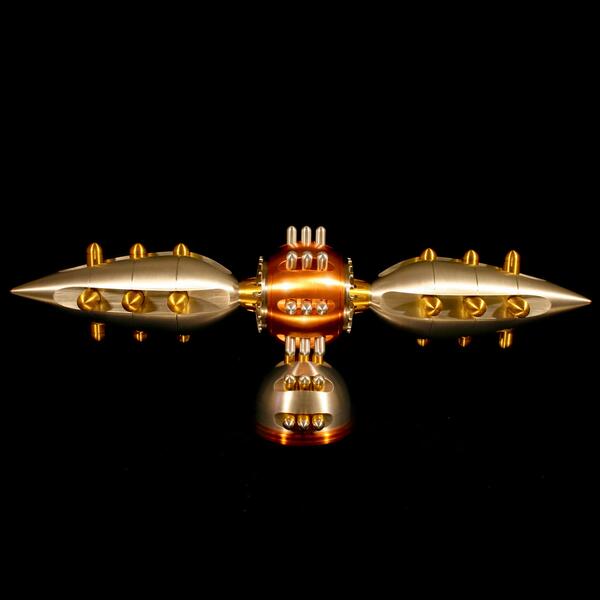 BF 589489281Machined Aluminum, Copper, Brass, Stainless Steel 7''x21''x5'' These works are not assemblages or made from found objects. Instead, every element of these sculptures has been designed, engineered and machined from solid blocks of the various types of metal that I use as my color palette.
BF 589489281Machined Aluminum, Copper, Brass, Stainless Steel 7''x21''x5'' These works are not assemblages or made from found objects. Instead, every element of these sculptures has been designed, engineered and machined from solid blocks of the various types of metal that I use as my color palette. -
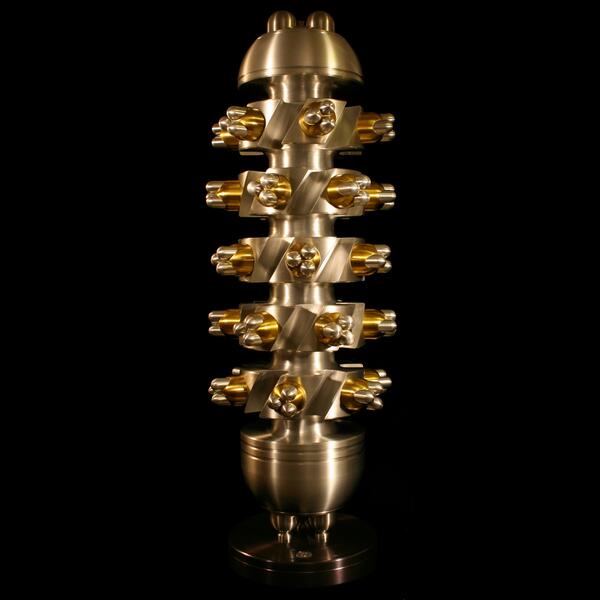 BH625514455315Machined Aluminum, Brass and Stainless steel 26"x9"X9" These works are not assemblages or made from found objects. Instead, every element of these sculptures has been designed, engineered and machined from solid blocks of the various types of metal that I use as my color palette.
BH625514455315Machined Aluminum, Brass and Stainless steel 26"x9"X9" These works are not assemblages or made from found objects. Instead, every element of these sculptures has been designed, engineered and machined from solid blocks of the various types of metal that I use as my color palette. -
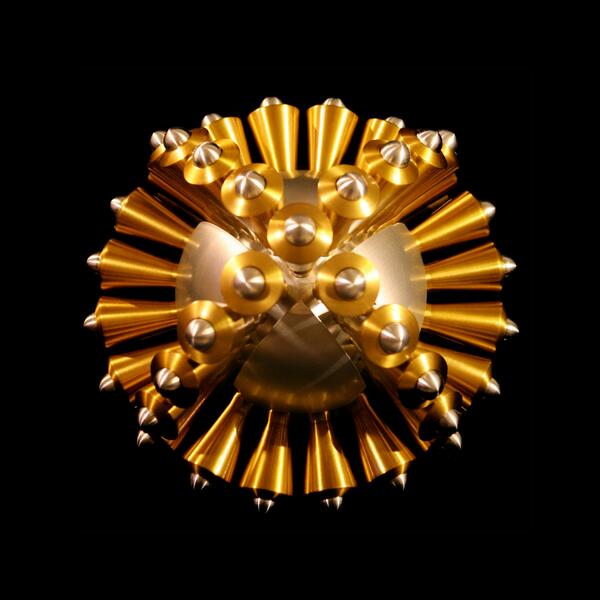 Mn783485521265683Machined Aluminum, Brass 5''x5''x5'' These works are not assemblages or made from found objects. Instead, every element of these sculptures has been designed, engineered and machined from solid blocks of the various types of metal that I use as my color palette.
Mn783485521265683Machined Aluminum, Brass 5''x5''x5'' These works are not assemblages or made from found objects. Instead, every element of these sculptures has been designed, engineered and machined from solid blocks of the various types of metal that I use as my color palette. -
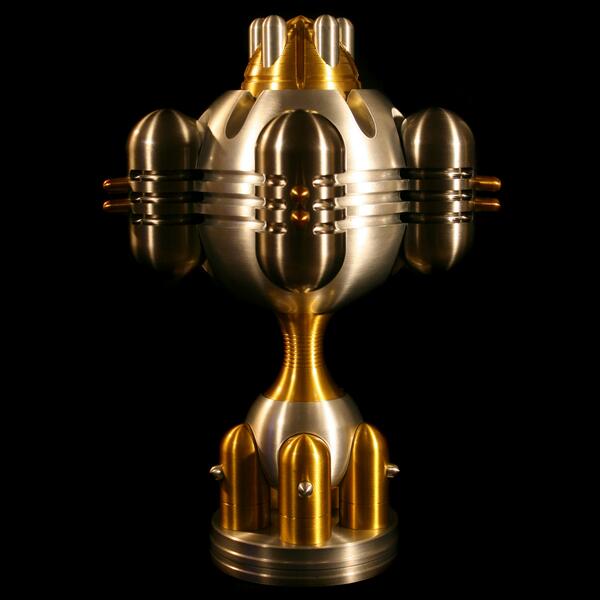 RY555441253Machined Aluminum, Steel, Brass, Copper 13''x8''x8'' These works are not assemblages or made from found objects. Instead, every element of these sculptures has been designed, engineered and machined from solid blocks of the various types of metal that I use as my color palette.
RY555441253Machined Aluminum, Steel, Brass, Copper 13''x8''x8'' These works are not assemblages or made from found objects. Instead, every element of these sculptures has been designed, engineered and machined from solid blocks of the various types of metal that I use as my color palette. -
 Sp683343447521Machined Aluminum, Copper, Brass, Stainless Steel 4.5''x4.5''x21'' These works are not assemblages or made from found objects. Instead, every element of these sculptures has been designed, engineered and machined from solid blocks of the various types of metal that I use as my color palette.
Sp683343447521Machined Aluminum, Copper, Brass, Stainless Steel 4.5''x4.5''x21'' These works are not assemblages or made from found objects. Instead, every element of these sculptures has been designed, engineered and machined from solid blocks of the various types of metal that I use as my color palette. -
 Th469621121501Machined Aluminum and Brass 9''x9''x11'' These works are not assemblages or made from found objects. Instead, every element of these sculptures has been designed, engineered and machined from solid blocks of the various types of metal that I use as my color palette.
Th469621121501Machined Aluminum and Brass 9''x9''x11'' These works are not assemblages or made from found objects. Instead, every element of these sculptures has been designed, engineered and machined from solid blocks of the various types of metal that I use as my color palette. -
 TT 677463343245Machined Stainless steel and Brass 2.5"x2.5"x2.5" These works are not assemblages or made from found objects. Instead, every element of these sculptures has been designed, engineered and machined from solid blocks of the various types of metal that I use as my color palette.
TT 677463343245Machined Stainless steel and Brass 2.5"x2.5"x2.5" These works are not assemblages or made from found objects. Instead, every element of these sculptures has been designed, engineered and machined from solid blocks of the various types of metal that I use as my color palette. -
 GN469247369Machined Stainless steel, Bronze, and Aluminum. 4"x3"x3" These works are not assemblages or made from found objects. Instead, every element of these sculptures has been designed, engineered and machined from solid blocks of the various types of metal that I use as my color palette.
GN469247369Machined Stainless steel, Bronze, and Aluminum. 4"x3"x3" These works are not assemblages or made from found objects. Instead, every element of these sculptures has been designed, engineered and machined from solid blocks of the various types of metal that I use as my color palette.












